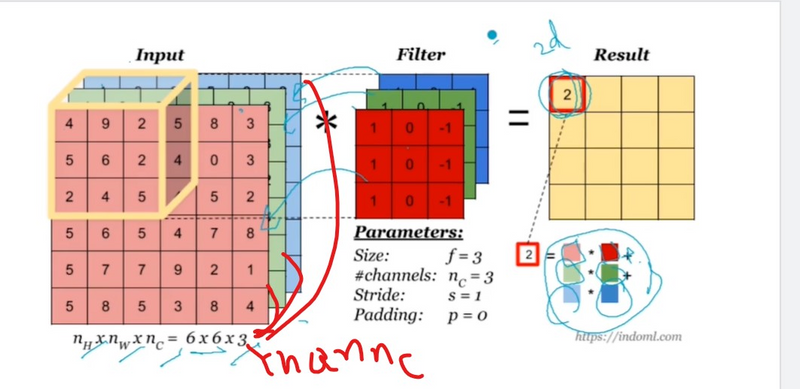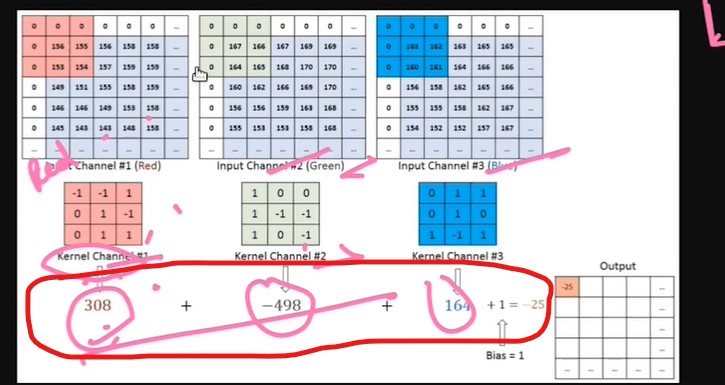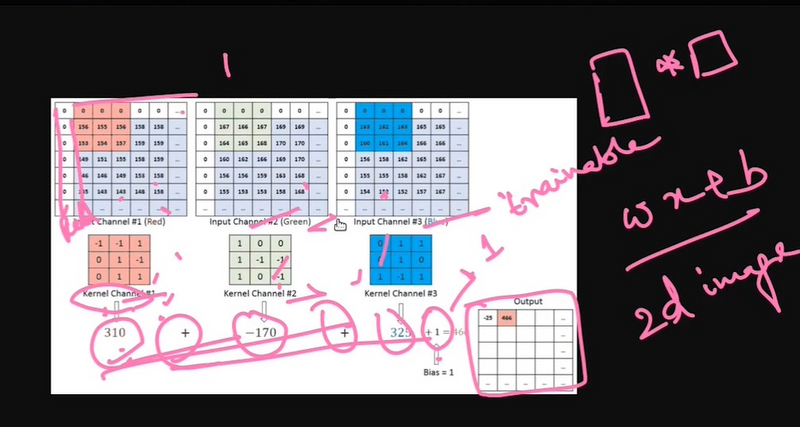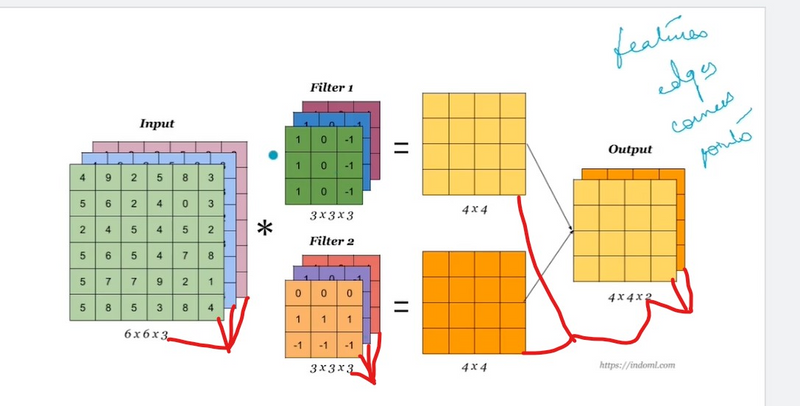Using multiple filters during convolution on multiple channels or 3D images serves several purposes in deep learning:
using multiple filter detect multiple things feature,edge,corners,points
no of feature == no of filter
Feature Extraction:
Different filters can capture different features or patterns in the input data. Using multiple filters allows the model to learn a diverse set of features at each convolutional layer.
Hierarchy of Features:
Each filter in a convolutional layer can be thought of as specializing in detecting specific patterns or features. By using multiple filters, the model can learn a hierarchy of features, starting from simple patterns in lower layers to complex representations in higher layers.
Depth of Representation:
The number of filters determines the depth of representation in a convolutional layer. A greater number of filters can provide a richer representation of the input, allowing the network to learn more abstract and complex features.
Increased Capacity:
Using multiple filters increases the capacity of the model, enabling it to learn a larger number of features. This increased capacity is crucial for capturing the diversity and complexity of information present in the input data.
Parallel Processing:
Multiple filters operate in parallel during convolution, allowing the model to process different aspects of the input simultaneously. This parallel processing can lead to faster and more efficient learning.
Learning Combinations of Features:
Filters in different channels can learn to detect specific features independently. By combining the outputs of multiple filters, the model can learn to recognize more complex combinations of features, facilitating robust pattern recognition.
Specialization of Filters:
Filters can specialize in detecting specific patterns or structures within different channels. For example, in RGB images, one filter might specialize in detecting edges in the red channel, while another focuses on edges in the blue channel.
Adaptability to Different Data Aspects:
Different filters can adapt to different aspects of the input data. For instance, in medical imaging with 3D data, filters might specialize in detecting specific structures or abnormalities in different orientations or slices of the volume.
Increased Non-Linearity:
Each filter introduces non-linearity through the activation function, contributing to the model's ability to learn complex relationships within the data.
Here's a simplified example of using multiple filters in a 3D convolutional layer with TensorFlow and Keras:
from tensorflow.keras.models import Sequential
from tensorflow.keras.layers import Conv3D
model = Sequential()
model.add(Conv3D(32, kernel_size=(3, 3, 3), input_shape=(64, 64, 64, 3), activation='relu'))
model.add(Conv3D(64, kernel_size=(3, 3, 3), activation='relu'))
In this example, two convolutional layers are used, each with a different number of filters (32 and 64). This allows the model to learn a more diverse set of features compared to using a single filter. The choice of the number of filters depends on the complexity of the task and the characteristics of the input data.





Top comments (0)